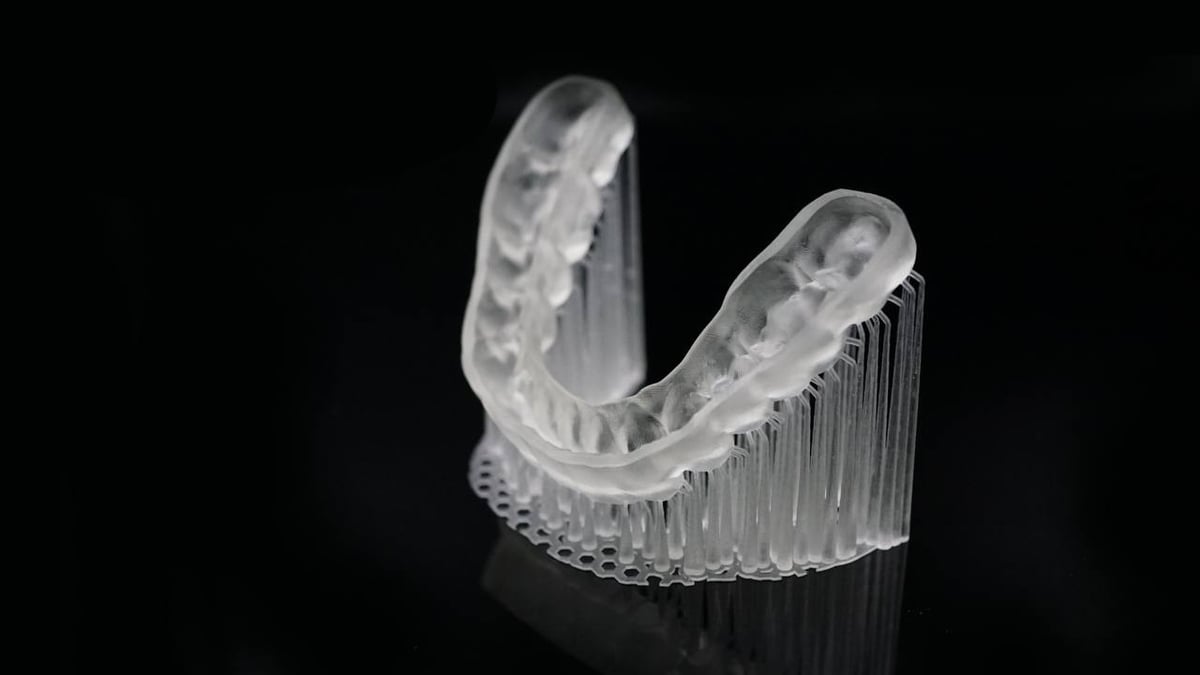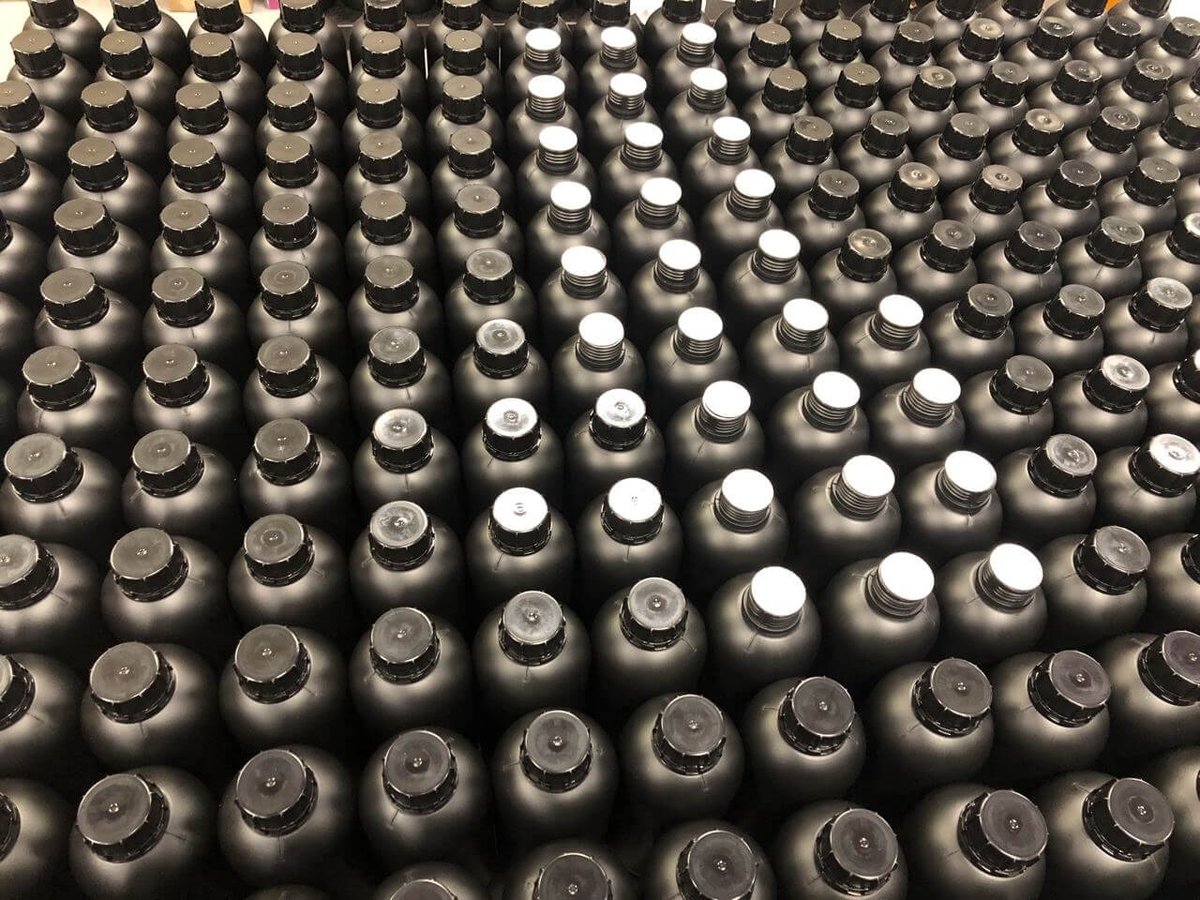A few years ago, HARZ Labs was two people mixing their own 3D printing resins with a drill at night in a small office. The company now supplies its products to dozens of countries around the world and is growing by 100% per year.
But, even the longest path consists of many steps and, often, mistakes. In light of the upcoming 3D printing online event from 3D.ru with prizes of up to $1 million, Harz Labs CTO Aleksandr Yurasov and CEO Andrey Adamov decided to remember 10 main stages of start-up building and give some advice to those who are just starting their journey to success.
Every start-up is unique. The way it operates depends on the field and starting positions, but you can still distinguish general development periods for most companies. The 3D printing industry has become a landmark for us – we produce resins and supply 80% of our products to dental professionals. Naturally, we wrote this article based on our personal experience in the field and the cases we’ve had. Let’s go.
Step 1: Evaluate Capabilities
Write down everything you have. This also applies to professional experience and team members; maybe you have a chemist, physicist, PR specialist, salesperson or someone else on your team. What are your strengths? Does the team have a background in related areas? Or maybe you’ve acquired your own fleet of printers over the years of experimentation? That being said, don’t get too focused on yourself and pay attention to the people you know. As your start-up takes its first steps, you have to get the strongest team possible and keep all available resources close, so that acquaintance of yours with experience in sales and connections in the 3D printing industry might come very handy.
If you don’t have any of those things or anything at all, it’s not a big deal. The most important thing you need to do is properly assess the situation and figure out which niche is the best, where you can apply your knowledge, and what pieces are still missing.
In our case, one of us was a chemist with experience in pharmaceuticals and UV curing materials, and the other was a physicist with marketing and presentation skills — these were our basic resources. Plus, we had a certain amount of money from previous jobs that was enough to keep the lights on until we got on our feet. With that foundation, we shared skills with each other and did a bit of everything at once, like any start-up.
Andrey had already worked in the resin industry before, so he had connections with certain printer and consumable manufacturers, they were our first contacts.
If you don’t have any connections, meeting new people at expos and similar events is a good place to start. You can ask for facility tours to learn from practice and possibly build connections. In fact, people love to share experiences when someone shows genuine interest in their work. Sooner or later, you’ll have useful contacts.
More often than not, young start-ups are well versed in the technical aspect, but there are gaps in knowledge when it comes to sales — this is another thing you have to consider when you evaluate the resources. If you can take care of building a sales system in advance — great, do it. If you can’t, you should have at least a basic idea of how things are going to work in that regard. This can be done by one of the partners, but if you don’t have the right person for the job, it might be worth looking for them at the very beginning. It’ll make your team stronger and get you a very important resource.
Step 2: Choose a Niche
Some start-ups focus exclusively on the thing they’re interested in without thinking whether it’s possible to make money from it. A trivial example of this is tablets. They debuted in the last century and failed, but look at them now — the market is carved out, and Apple presents a new model every year.
The other extreme is to throw yourself into any niche there seems to be money in. If you engage in something you personally don’t find interesting, you won’t last long, and people driven by enthusiasm are the foundation of any start-up.
We didn’t find our niche right away either. At first Andrey tried to enter the car painting field. His resin allowed to paint a car in half an hour. It was cool and innovative, but the material cost several times more than traditional ones. As a result, convincing auto repair shops to switch things up was next to impossible. The change required creating training programs, universities, and changing the mindset of car mechanics, which was impossible to achieve as a small start-up.
Then we tried to get into the beauty industry with nail polishes, but the target audience was more interested in the brand and marketing, not the product itself.
Then we became active on social media. People started noticing us, and we got our first client in a new field. A dentist took interest in our resins. He read about us on the Internet, came to our makeshift lab for a tour and immediately made an advance payment for several kilograms of resin. This showed us that the demand was there, and it was quite high. Since then, we began to purposefully increase our activity in dentistry, abandoning the mass market for a niche where product’s properties are more important than its price.
Step 3. Choose a Product
Even if you have a preferred niche, you can still go wrong with the product if it’s difficult to scale.
3D.ru, the company that helped us with acceleration, had a prominent case. A man came to them with a patent for a 3D printer print head that allowed you to mix colors internally and print in the selected color. It sounded great on paper, but market research showed that the project wasn’t scalable, and there was no demand for it. In theory, it could be implemented in the souvenir industry, but then you’d have to develop your own consumables. Yet, the idea itself was good.
First and foremost, you need to understand what you’re going to sell and how you’re going to sell it. We placed our bet on a simple and convenient universal resin for dentists. We started to meet doctors, go to their professional expos, acquire contacts and collect feedback.
We learned about the issues dentists had. It was difficult for them to get materials. In fact, getting a stable source from abroad is tricky to this day. The price is another point — we offered a resin that was 3-5 times cheaper than what our competitors had. In terms of properties, the customers basically asked to replicate the usual materials, so it was possible for us to take samples, examine them and get a clear technical assignment.
Step 4: Make a Prototype
Next, you need to create the first prototype to demonstrate to potential clients and investors. Of course, if the investor has a good understanding of the industry, you can approach them even if you have just the idea and get feedback. Although, having something to showcase your work and skills will increase your chances.
We’re not talking about the final product on an industrial scale, but literal one-off prototypes that demonstrate your main USP. The product has to function, albeit not in full swing. It has to perform basic functions, without bells and whistles.
In most cases, it makes sense to invest your own money in a prototype. In the 3D printing industry, it’s not that expensive. You seek help from people you know or buy the cheapest printer for a few hundred dollars. Again, if the idea is promising and requires a little more resources, some companies, like 3D.ru, can provide their capacities, but this isn’t the case for everyone.
It’s better to print a dozen plastic items and put them together with a file and adhesive tape than invest a lot of your own money in a hopeless project. Most importantly, it should work and be useful. As for the price point, we recommend setting the number that would make sense in the respective market you plan to enter.

Step 5: Look for the First Clients
You’ll have to knock on all the doors you can get to. If you’ve already decided on a niche, most likely there are professional expos attached to it. It worked very well in our case. We became more visible, more people approached us, and our sales grew. Not by a lot, but there was growth. And this strategy still works.
After partnering up with the co-founder of 3D.ru, we went to the main industry expo, Formnext. With the help of our investor, we bought the most expensive ad space there, communicated with people a lot, and exchanged contacts. Sales have grown considerably, and word of mouth has been helping us for at least two years. People realized that since we’re exhibiting there, we have something to show.
Don’t limit yourself to large-scale events, you have to dig deep in the beginning. Make a list of potential clients in your city (e.g. dentists) and sort them from largest to smallest. Start at the bottom — it’ll let you gradually gain experience, collect feedback and be prepared when you approach the desired partners.
Bring your prototypes to every meeting and offer people anything they’re willing to agree to — take a look at the prototype, use it, test it, or maybe even buy a batch. Selling the product at this stage isn’t your goal, you need to build connections first and then collect feedback on the product.
Don’t forget about friends and acquaintances — it won’t hurt to tell everyone about your start-up. The six handshake rule still exists.
Our first sales were spontaneous. Selling $200 worth of product a week was super cool back then, even though this number seems tiny compared to what we make today.
The main thing is to show the potential investor there’s demand for your product, because it’s the first thing they’re going to ask about. They won’t if the demand is obvious, or if they strongly believe in the product, but investors that work like this are a rare breed.
Also, if the investor has the resources, knowledge and good contacts, they can consult you regarding the demand directly. This type of investor can be classified as a resource (step one) because they’ll tell you where to go and help close the gaps in expertise if you have any.
Step 6: Collect Feedback
Call, come for a visit, and communicate with everyone who interacted with your prototype in one way or another. Always be open to incoming requests. Don’t focus only on the positive experience, find out what people didn’t like as well — it will all come in handy when you need to polish the product in field conditions, among other things.
An important point to make: you accumulate expertise by communicating with your potential clients. They begin to perceive you as an expert who can be contacted when they have a question or need help. This greatly increases customer loyalty and ultimately leads to new sales.
Take us for example. We’re a resin manufacturer, but we also know a lot about printers and technical issues. We’re ready to offer a competent opinion on transition to a new technology or answer questions about the hardware at any time. It got to the point that our tech support became more prominent than some of the ones our researches have. And the more we are perceived as experts, the more new people come.
Tech support people need to understand what the customer’s issue is and help fix it. For instance, there’s a program dentists model teeth in. The file from this program can be saved in two different formats that either support CNC milling or 3D printing. People try to use the milling format to print all the time, and are confused when it doesn’t work. The problem isn’t with our polymer, but it needs to be solved regardless. In order to understand how these situations happen, you need to collect customer feedback non-stop.
Step 7: Upgrade the Product
Unfortunately, if you’re producing stuff like resins, the result doesn’t always depend solely on you, especially in 3D printing. In a lot of cases, the problem is not with the consumables, but with the printer itself — in our industry, every machine is unique. Your expertise can help the client navigate the situation and it will only strengthen your relationship, even if the first feedback was negative.
One time, we received a call from the south of the country. They said that the resin stopped sticking to the table. When we looked into it, it turned out that they had installed an air conditioner in the room and the temperature dropped. The settings were optimized for 28 degrees Celsius, but it dropped to 22. A few degrees messed up the whole printing process. They corrected the settings, and everything went back on track.
When the client realizes you’ve solved a problem above your pay grade, customer loyalty skyrockets, and word of mouth begins to travel with an added vim. This is one of the reasons why we have a tech support team.
Comparing your product to others in order to understand the real state of affairs might prove useful too. We constantly raise the bar for things like shade consistency from batch to batch — the stuff young start-ups don’t usually need.
We continue to upgrade our products, but we don’t make a point of presenting these changes to our clients. People use our materials and see the improvements themselves, that’s the main thing.
We’re also working on making our resins odorless, that’s what distinguishes us from the manufacturers who use cheap and toxic raw materials.
You come to understand all these things bit by bit. We didn’t have a full picture of improvements right off the bat, but feedback and market research helped us figure it out.
Step 8: Take Care of PR

A cool product will speak for itself, but you need PR anyway. People talked a lot about us after we participated in major expos.
In the 3D printing industry, PR is more of a supporting function. The product comes first, that’s why this step is almost at the bottom of the list. If you have a product line like ours, then there have to be several things you can use to build a foundation. You can start getting publicity based on those products and gradually add new ones to the mix, since you should already have a reputation by this point.
We also spend a lot of money on free and paid samples. Our brand was built with the intent to do this — we specifically partnered up with people interested in moving the industry forward, not just those who wanted to get free stuff.
Step 9: Strengthen Your Company
This includes certification, legalization, and formalizing the company in order to make the business more stable, and all of this means a huge amount of paperwork. I’m not going to go into the details because the subject is enormous, but you need to be ready for this. It’ll help to make your business processes more transparent and give you an opportunity to go back to any point and analyze the situation that has occurred in detail when you see fit. All these papers can save you a lot of grief and time.
Certification of a company implies standard transparent processes any third party can audit.
At some point, we felt that we’d start to lose control if the capacity increased by 100%. We’d be forced to make rushed decisions, and it’s very difficult to stop it. You need to be ready to load the system with scaling in mind, like they do it in IT.
There are times when bureaucracy can be useful. Let’s say we have produced and sold a batch of resin, and a year later the client says that it’s unsuitable for printing. Usually, we’d have to replace the resin, but now we can pull up the old documents and see what we made, what we made it from, what was the batch of raw materials, what was corrected, and whether there were any complaints.
In some cases, clients do something wrong and decide to cover their losses this way. In other cases, it turns out that the entire batch was defective. Then you can be one step ahead and replace the entire batch for the resellers. Doing so builds trust, since we can fix our mistakes before the client suffers losses because of us.
Step 10: Scaling
New products, new areas of application, new markets, there’s no way but up from here. If you got to this step — congrats, you’re breathtaking! But this is a topic for a separate article, and probably more than one.
